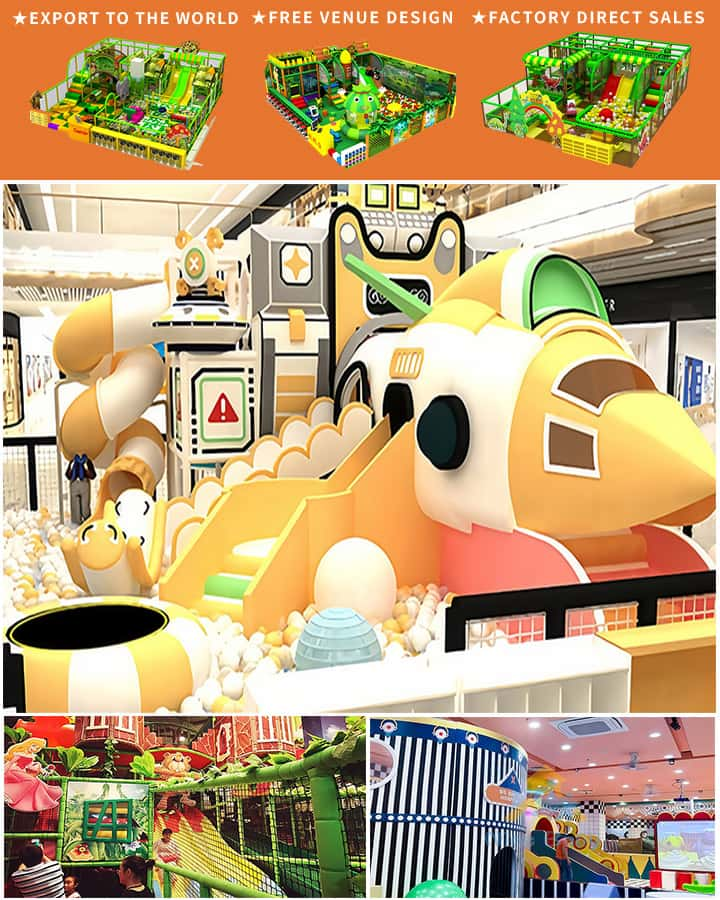In an age where screen time dominates the lives of children, indoor commercial playground equipment emerges as a beacon of physical activity and imaginative play. These facilities offer a sanctuary where kids can engage in exhilarating adventures while parents enjoy peace of mind knowing their young ones are safe and supervised. This article explores the various aspects of indoor commercial playground equipment, from its benefits to the different types of installations available.
The Importance of Indoor Playgrounds
Indoor playgrounds have become essential in urban areas where outdoor space is limited due to weather conditions or lack of green spaces. They provide a consistent environment for year-round activities that promote physical fitness, social interaction, and cognitive development. Unlike traditional playgrounds, indoor commercial playgrounds are specifically designed to cater to diverse age groups and developmental stages, ensuring that every child finds something enjoyable and beneficial.
Benefits for Children
Physical Health: Engaging in physical activities helps combat childhood obesity and improves muscle tone and coordination. Slides, climbing structures, and trampolines contribute to overall motor skill development.
Mental Stimulus: Interactive games and creative play areas stimulate cognitive functions and enhance problem-solving skills. Puzzle walls, sensory play areas, and educational exhibits encourage learning through play.
Social Skills: Shared play environments teach valuable social skills such as teamwork, sharing, and empathy. Group activities help children develop communication abilities and build friendships.
Emotional Well-being: Regular physical activity releases endorphins, which elevate mood and reduce stress. Indoor playgrounds provide a fun outlet for self-expression and emotional release.
Types of Indoor Commercial Playground Equipment
 Indoor commercial playgrounds boast a wide array of equipment tailored to meet various needs and preferences. Below are some common types:
Indoor commercial playgrounds boast a wide array of equipment tailored to meet various needs and preferences. Below are some common types:
Climbing Structures
Climbing walls, rope nets, and cargo nets challenge children’s balance and agility. These structures come in varying heights and complexities to suit different age groups and skill levels. They encourage confidence-building as children navigate obstacles with increasing difficulty.
Slides and Poles
Sliding poles offer an exciting way for kids to descend after climbing. Twisting tube slides add an element of surprise and delight. These features are often combined with climbing structures to create multifaceted play units that keep children entertained for hours.
Trampolines
Trampolines are a staple in many indoor playgrounds due to their universal appeal and cardiovascular benefits. Modern designs include safety nettings and padded surfaces to ensure secure bouncing experiences.
Interactive Installations
Digital interactive installations such as touchscreens, video games, and virtual reality setups merge tech with traditional play. These innovations captivate tech-savvy kids while promoting physical engagement through motion-based gaming.
Soft Play Areas
Designed for toddlers and young children, soft play areas feature foam shapes, ball pits, and cushioned flooring. These zones allow little ones to explore safely without the risk of injury from falls or bumps.
Educational Play Equipment
Interactive panels, puzzle boards, and role-play stations foster learning in a playful context. These areas often incorporate themes like science, nature, or cultural studies to make education engaging and accessible.
Safety Considerations
Safety is paramount in indoor commercial playgrounds. Here are some key considerations:
Material Quality: Equipment must be made from durable, non-toxic materials that can withstand heavy use while ensuring user safety.
Maintenance: Regular inspections and maintenance schedules keep the equipment in top condition, identifying and addressing potential hazards promptly.
Supervision: Trained staff should monitor play areas to prevent accidents and intervene if necessary. Clear safety guidelines and emergency procedures must be established and communicated effectively.
Conclusion
Indoor commercial playground equipment provides a vital outlet for physical, mental, and emotional growth in children. By offering a variety of engaging activities within a safe, controlled environment, these facilities serve as pillars of community wellness and youth development. As urban landscapes evolve, the importance of such recreational spaces will only continue to grow, fostering healthier, happier, and more connected generations.




